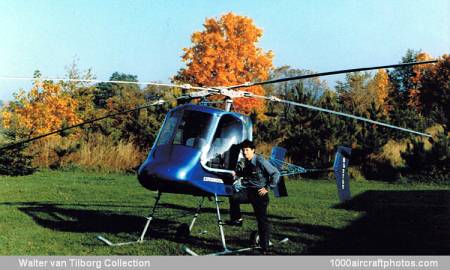Planning the project took three years, with design beginning in December 1981, and construction of the Hummingbird took a further two and a half years from January 1982, accounting for about 4,000 working hours. The aircraft was winner of the 1984 EAA Outstanding New Design (Rotorcraft) Award and the first tethered flight was made on July 20, 1984, with the initial free flight on November 3, that year, while it received its Experimental Category CofA on April 29, 1986.
The Hummingbird featured intermeshing rotor blades, a glass fiber and aluminum cabin enclosure, and had two 70 hp VW1835 modified car engines installed driving a transmission and multi V-belt system. Virtually all component parts were designed and constructed by DeGraw, who didn't intend to market plans, so only the prototype aircraft was built."
Rotor diameter (each): 25 ft 3 in (7.70 m)
Length, fuselage: 16 ft 8 in (5.08 m)
Height, rotor head: 8 ft 0 in (2.44 m)
Rotor disk (each): 500.7 sq.ft (46.52 sq.m) each
Weight empty: 1,096 lb (497 kg)
